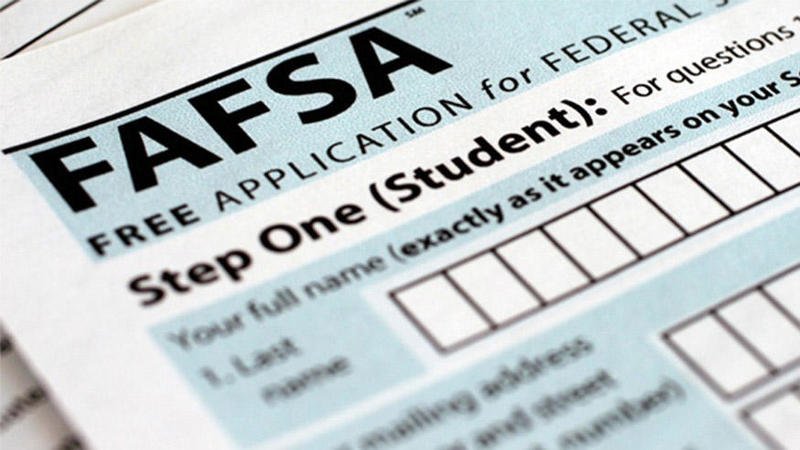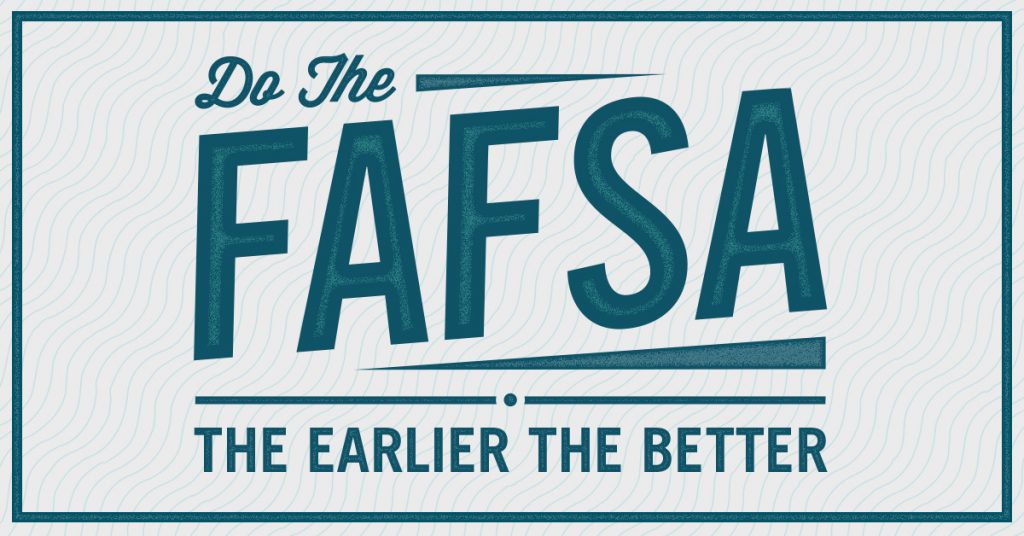With your student son or daughter in their senior year of high school, October is the perfect time of year to review college financial prep in advance of college applications and planning. Many parents don’t realize they qualify for the Free Application for Federal Student Aid (FAFSA). Federal Student Aid can provide a much-needed boost in your finances to help with tuition, textbooks, and housing.
If you are currently in the hunt for financial aid for college, it would be wise to add the FAFSA to your rounds of scholarship and grant applications. Here are some commonly asked questions about the FAFSA, including where to find important materials:
What is FAFSA?
Here is an excellent description from NerdWallet: “The Free Application for Federal Student Aid is the form that the federal government, states, colleges, and other organizations use to award financial aid. Submitting it is your key to accessing grants, scholarships, work-study programs and federal student loans.”
Do We Qualify for the FAFSA?
According to the FAFSA website, here is the basic criteria you must match in order to qualify for Federal Student Aid:
- You have clearly definable financial need
- You are a U.S. citizen or eligible noncitizen
- You are or will be enrolled in an eligible degree or certificate program at your college or career school
Additionally, it is important to note there is no income cut-off to qualify for federal student aid. Many factors—such as the size of your family and your year in school—are taken into account.

When Can I Apply for FAFSA for 2020-2021?
FAFSA enrollment begins each year on October 1 for the following year of school. Therefore at the time of this writing, the 2020-2021 FAFSA application window has already been open for over two weeks. It will remain open until June 30 of 2020, representing the last point at which applications will be accepted within the same year for Student Aid.
US News provides a solid perspective on why it isn’t best to wait until next year: “In fact, experts say many students wait to submit the FAFSA until their state deadline or even later. The federal application remains open for a full 21 months, not closing until June 30 nearly two years after the application opened for a given award year. In the 2020-2021 aid cycle, for example, the FAFSA will open on Oct. 1, 2019, and the last day for students to submit the form is on June 30, 2021. This means that rising high school seniors who plan to begin college in 2020 should prepare to fill out the FAFSA starting this October.”
How Do I Apply for FAFSA for Spring 2020?
To apply for FAFSA, you will need to have the following information handy:
- Your FSA ID, which you can create on fsaid.ed.gov. Note: Both the parent and the student will need that to create their own FSA ID and keep it private.
- Your social security number and driver’s license. Alien registration numbers can be used in place of these items if you are not a U.S. citizen.
- Your federal income tax returns, W-2s, and any other documents related to any money and income earned.
- The parent’s or parents’ income tax returns, W-2 forms and 1040 forms if you’re a dependent.
- Bank statements and records of investments (if applicable).
- Records of untaxed income (if applicable).
- Title IV Institution Codes for each school you’re applying to, which you can find from the FAFSA federal school code search.
Complete the form by following the instructions in the link from the first bullet. If you need additional guidance during the application process, follow along with NitroCollege, they lay everything out in a straight-forward and easy-to-follow manner.
How Long Does It Take to Hear Back on My FAFSA Application?
One business day after you have successfully completed your application for Federal Financial Student Aid, the schools listed on your FAFSA will receive the Institutional Student Information Record (ISIR) in electronic format. The ISIR contains the same information as the SAR, including your expected family contribution (EFC). According to Edvisors, “Depending on whether you completed the FAFSA online at FAFSA.ed.gov, have a valid email on file, and signed the online application using the FSA ID, it can take 3 to 5 days to process your FAFSA and send you a Student Aid Report (SAR). The SAR summarizes the information you provided on your FAFSA. The process could be longer if the FAFSA was not electronically signed with an FSA ID.” Edvisors also provides a very handy table for determining when you can expect your SAR.
What To Do If You Have Already Applied but Haven’t Received Your SAR
If you haven’t received the SAR, check on the status of your application by logging in on tte FAFSA.ed.gov site with your FSA ID, name, Social Security Number, and date of birth. You can call the Federal Student Aid Information Center (FSAIC) at 1-800-4-FED-AID (1-800-433-3243).
_______________________________
If you found our blog looking for financial advice or assistance with credit card debt relief or debt consolidation, call Golden Financial Services today at (866)-376-9846 or info@goldenfs.org. You can check out the rest of our blog here, and do your research on our services here. Let’s talk soon!


